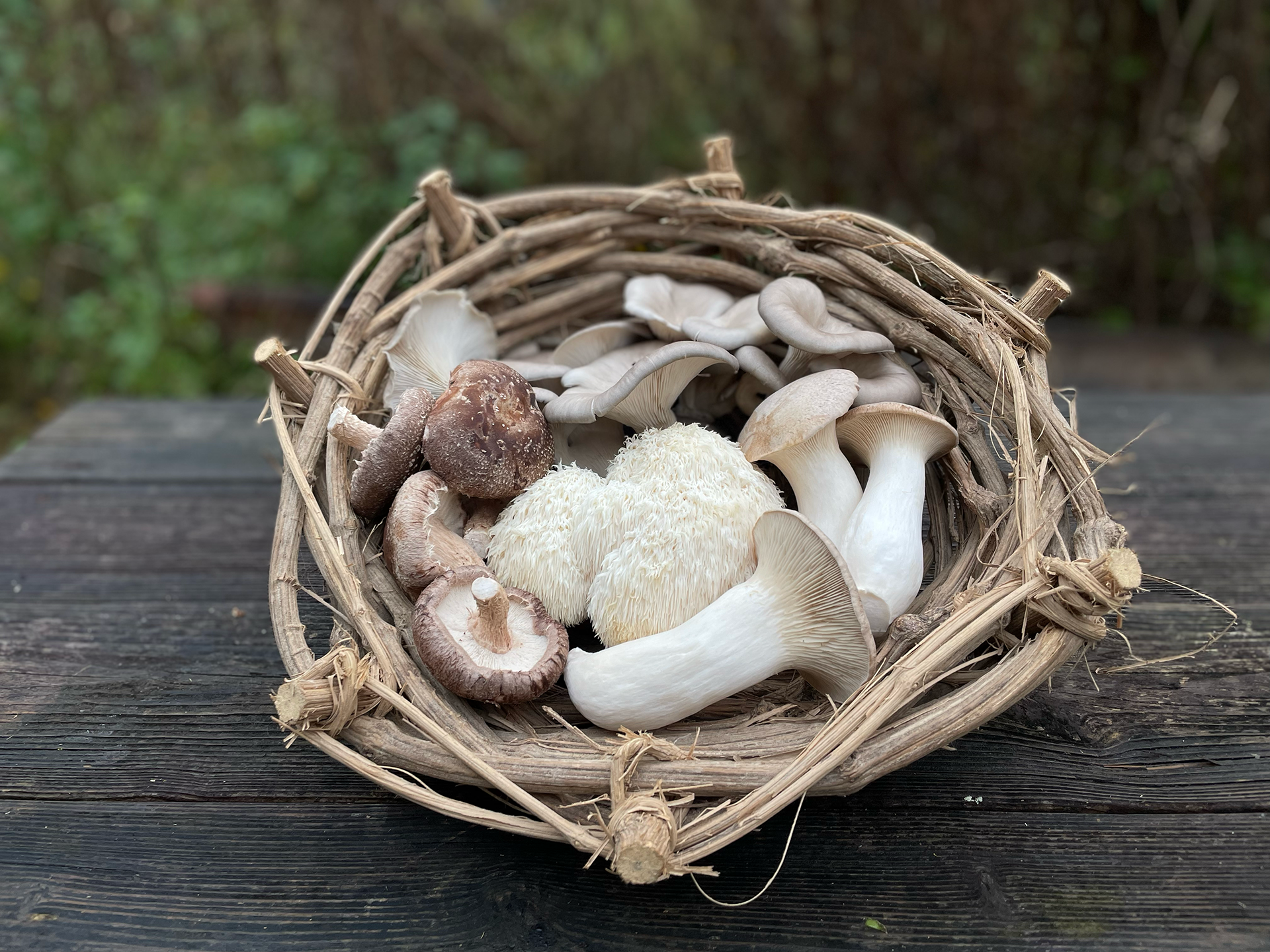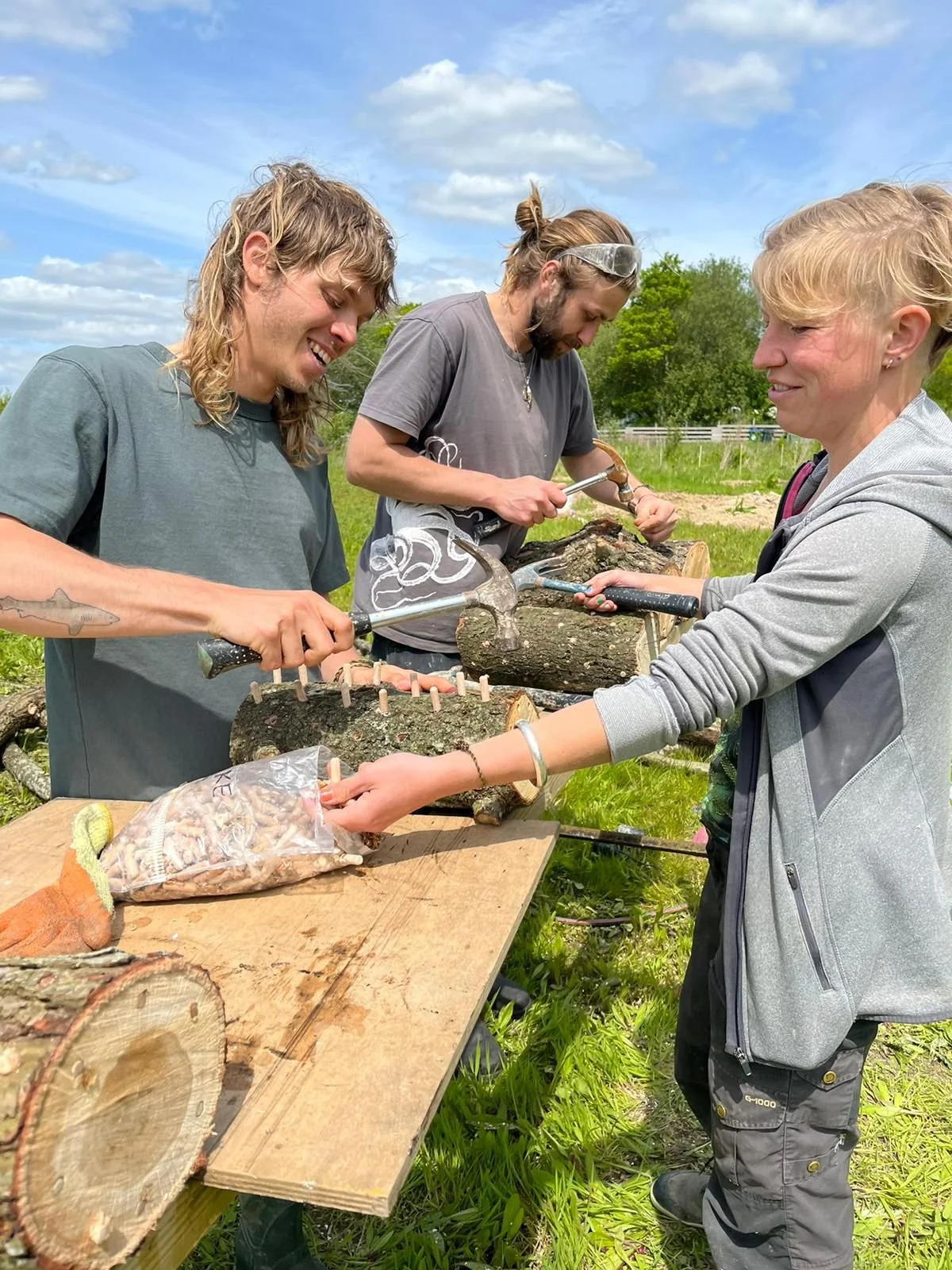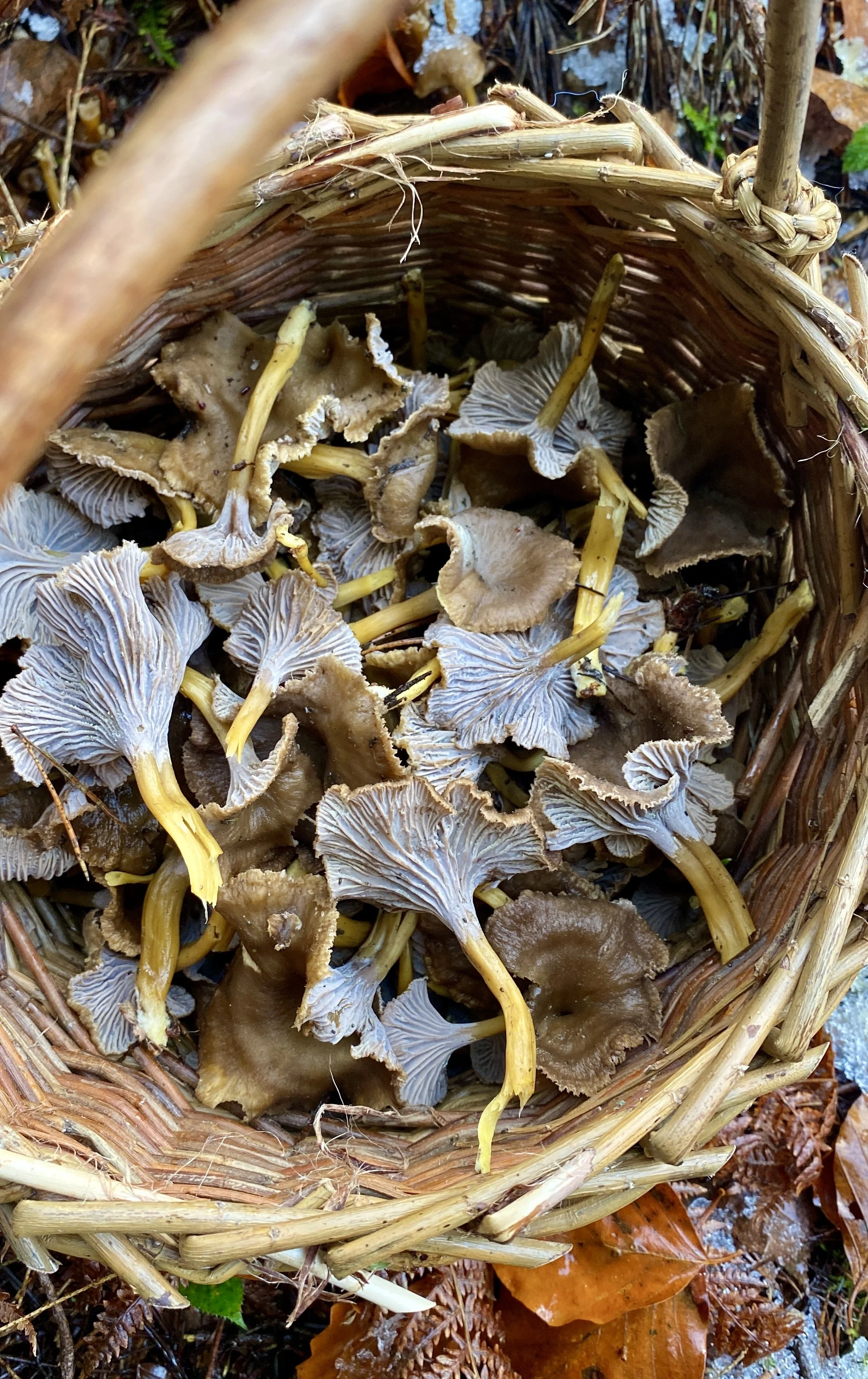Mushrooms
Mushrooms deliver a flavoursome umami punch and are packed with dietary fibre, vitamin D, and other health-boosting compounds. Their meaty texture also makes them an excellent meat alternative. Recent advances in mushroom production now offer steady year-round supply of once seasonal mushrooms.
However, widespread plastic waste, peat-based substrates, and over-consumption of energy and water are some of the problems associated with industrial-scale mushroom production. Thankfully, innovative mushroom farmers around the UK are challenging these practices and showing how properly-managed mushroom cultivation can be a part of regenerative land use. See our key takeaways below for key tips on choosing agroecological mushrooms.
KEY TAKEAWAYS
-
Outdoor-grown mushrooms require suitable weather (usually the warm, wet climate of spring and summer) to fruit and are therefore seasonal. In order to replicate these conditions and ensure year-round fruiting, many commercial mushroom companies use energy-intensive environmental (heat and humidity) controls. By buying seasonal mushrooms, we can help create demand for them over indoor-grown mushrooms.
As well as using minimal energy, outdoor mushrooms are slower growing. Whilst this is a challenge for many commercial growers, it means chefs and diners enjoy richer flavours and more complex nutritional profiles, including many of the compounds that make mushrooms prized as traditional medicines! Read our contribution from Goldon Horn Farm to learn more about the benefits of seasonal mushrooms.
-
Currently, there aren’t enough mushroom farms growing outdoors to meet consistent supply. Given mushrooms’ suitability as a meat substitute, indoor-grown mushrooms can still be a better agroecological choice than serving meat. This is because indoor mushroom farming makes possible high yields of nutritionally complex foods on minimal land and with a small workforce – often while using waste products of other industries.
If you can’t source outdoor-grown mushrooms, look for suppliers who are actively working to reduce their environmental impact through the use of renewable energy to fuel their environmental controls and by using the practices outlined below.
-
Mushroom substrates – what the mushrooms grow on – can vary lots, depending on mushroom species and grower choice. They include logs, woodchip, straw, sawdust, coffee grounds, peat, and many others. Make sure that your supplier is using chemical-free waste products from reputable sources. For wood-based substrates, look for certifications like GIB, FSC, and PEFC.
-
One of the worst habits of the industrial mushroom sector is the widespread use of peat as a substrate, contributing to the destruction of our most effective carbon sinks. This must be avoided at all costs - especially given the number of substrate alternatives that exist which make use of waste streams. Sadly, button mushrooms are a huge culprit for this – see our below section on button mushrooms for the details.
-
The mushroom industry uses a lot of non-recyclable plastic, both in production and transport. The single best way to avoid this is to buy mushrooms cultivated on logs and delivered free of single-use plastics. Certain mushrooms, like oysters, can also be grown in reusable buckets. Ask your supplier what they’re doing to cut back on single-use plastic in the supply chain, and back suppliers who are eliminating it.
-
Look for suppliers with a compost plan or those repurposing waste within their production process. Composting spent mushroom substrate turns it into a valuable nutrient source, whereas improper disposal can harm the environment and lead to fungal contamination.
See our Top Five cultivated mushrooms:
-
Can be cultivated on various agricultural waste products like straw or coffee grounds. Require minimal inputs, grow quickly, and have high yield. Well suited to growing without temperature controls and can be available most of the year when different varieties are used.
-
Shiitakes are now grown in the UK on sustainably harvested logs or sawdust-based blocks. This method is low-impact and supports forest ecosystems when the wood is sourced responsibly. They are also well suited to outdoor growing, providing a richer flavour. Available in the spring and autumn.
-
Similar to oyster mushrooms, but king oysters have the added benefit of a longer shelf life. They can be grown outside in temperate climates but only in spring and autumn.
-
Also known as ‘hen-of-the-woods,’ maitakes can be cultivated using managed woodland byproducts like hardwood sawdust and wood chips. Additionally, they can be grown outdoors using logs as a substrate, ensuring they are an agroecological option for mushroom cultivation. In the wild, they grow naturally at the base of hardwood trees, particularly oaks, elms and maples.
-
Grown on hardwood sawdust blocks or logs, lion's mane is a good candidate for sustainable cultivation in the UK. However, it is worth noting that we do not fully understand the impact it may have on the local ecology when using commercial (non-native) strains for larger production. Therefore, it is better to use endemic strains whenever possible and to not grow these outside.
These are the 5 mushroom species that are best suited to growing agroecologically in the UK – sadly, buttons aren’t included! All of them can be grown outdoors (except Lion’s Mane - see note), and can also be grown indoors on substrates that make use of waste streams.
With thanks to Dart Valley Fungi for their expertise. Dart Valley Fungi, set in Devon's rolling hills, produces substrates for exotic, organic mushrooms prized for culinary and medicinal uses. Their unique closed-loop system keeps nearly all processes on-site, including organic substrate creation using by-products like straw, wheat bran, and sawdust.
The truth about
button, chestnut and portobello s
mycologist Dan Eastwood provided us with his expertise
Button, chestnut and portobello mushrooms are all forms of the same species at different growth stages. They require a 'casing' layer with specific beneficial physical properties to produce high yields. Peat is the most effective casing currently in use, but its extraction contributes to the depletion of UK peatlands, which are among the world’s richest carbon sinks.
Small-scale restaurants can support mushroom farmers growing exotic varieties that don’t rely on peat, offering a more sustainable cultivation method. However, on a national scale, using these exotic mushrooms as a meaningful meat protein replacement is not yet feasible due to their higher costs in our industrialised food system.
If demand for varieties like oyster and shiitake mushrooms grew in the UK, this could change—making it an excellent reason to showcase these mushrooms on menus. In the meantime, larger restaurant and catering groups that cannot make the switch to exotic mushrooms can reduce their carbon footprint by swapping meat for button mushrooms, as even with peat use, mushrooms have a significantly lower carbon footprint and resource use compared to meat.
Wild Mushrooms and Foraging
Foraging wild mushrooms is highly seasonal. Whilst harvesting mushrooms—whether by cutting or pulling—does not typically reduce the quantity of mushrooms that grow, trampling on the woodland floor can be harmful. Some areas are already over-foraged and cannot support further foraging, so it’s important to rely on responsible and knowledgeable local foragers.
Read how you can create a relationship with a local forager here.

















